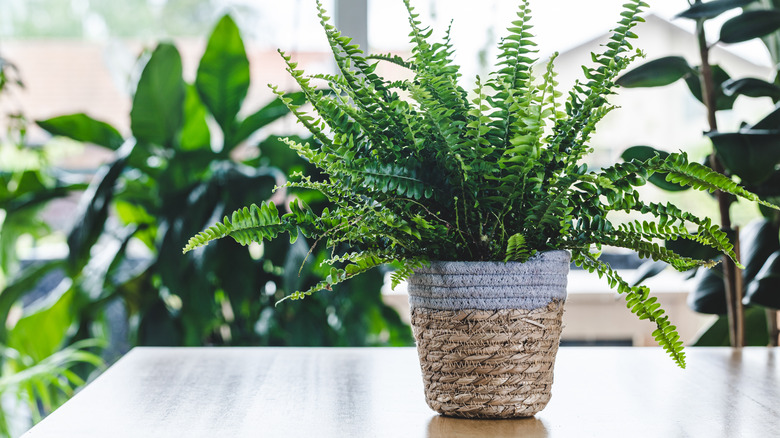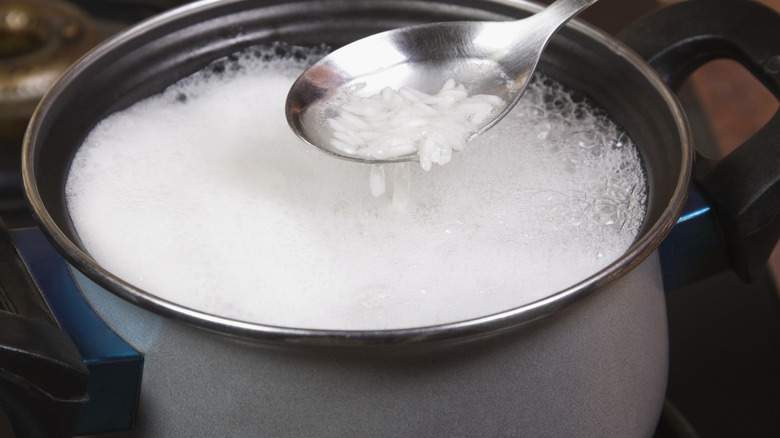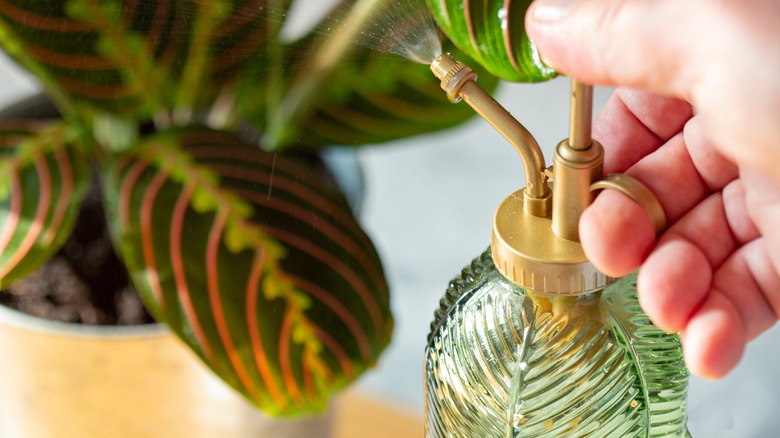This Unexpected Kitchen Staple Might Help Salvage Your Dying Plants
Your houseplants, whether they're your plant babies or just an enjoyable addition to your home, are important, and deserve all the TLC they can get. While some may be fickle and difficult to look after, others might require very little attention to thrive. Regardless, it's always nice to find tricks and hacks that help them live their best chlorophyll-ed lives. The internet is full of clever (and sometimes strange) ways to care for your leafy additions, including using coffee grounds as fertilizer or putting succulents in cat litter to help them grow (via Bustle).
Using items that are already found in your home is a massive perk for many plant owners because sometimes this oxygen-producing, endorphin-giving flora can be expensive. Getting the right soil, switching out pots to accommodate growth and roots, and even replacing ones that simply give up can create a decent-sized bill, which is why finding hacks that can be sourced from the pantry is always a win. With that in mind, this trick comes from a household staple and will not only blow your mind but breathe new life into your dying plants. Are you ready to love a common food item even more? Because this delicious and affordable grocery is about to transform your home into a greenhouse escape.
Rice water
You might love cooking with rice — and why wouldn't you? It's easy, inexpensive, and can be used in hundreds of different dishes. Rice is one of those items you can find in nearly every pantry, and because it's so accessible, you can stock up without worrying about breaking the bank. But rice is no longer just useful as a side dish (or even a main ... did someone say egg fried rice?) because it can also offer nutrients to your plants.
The grains themselves can be saved for dinner, but the water you cook them in is actually one of the most beneficial forms of food for your greenery. In fact, according to the National Nutrition Council of the Philippines, rice water provides plants with a healthy source of nitrogen, potassium, and phosphorus.
In order to get the most out of your rice water, it should be boiled first, so the best form is the leftovers after cooking your grains. This ensures more of the above elements are extracted, giving your plants a big dose of what they need to thrive and survive. Why Farm It recommends misting it over your flora, but only once the water has cooled down to room temperature. Pouring hot water could be detrimental, so set the rice mixture aside once you've removed the grains and let it sit for a while.
The benefits of using rice water
To use this method, you can add it to a misting sprayer, then apply it once every two to three weeks. Because it's so carbohydrate-dense, you don't want to overdo it, or the water could have an adverse effect and become detrimental to the plants or soil. Why Farm It also notes that you should throw out rice water that is older than a week, and keep it in the fridge for only up to seven days. It can be added directly to the soil, too, but misting will help dying plants absorb as much as possible.
Some of the other benefits of using rice water include the anti-waste aspect, which allows you to reuse materials from cooking for other purposes. This source is also environmentally friendly, which is always a bonus, for plant lovers especially. You'll end up saving money, since store-bought fertilizer can be pricey, and large amounts of plants require a lot of replacement bags.
According to Flourishing Plants, this method also helps increase the healthy bacteria that reside in the soil you use, and can even keep pests under control. With so many perks, it's amazing stores don't bottle it and sell it for profit! However, the shorter shelf life can be a drawback, so make sure to plan your rice water applications accordingly to avoid adding too much to the plants. Rice isn't just a healthy staple for humans, it turns out — now your plant babies can enjoy the goodness, too.


